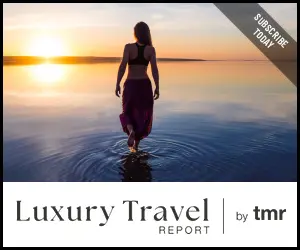Opinion: The Luxury Travel Industry Isn’t Ready for This Recession
Luxury travel scaled fast after COVID-19. Now, with recession risk rising, an advisor warns the industry may not be built for what’s next.

Photo: Nils Nedel / Unsplash
Nobody likes the R-word, but let’s face it: If a recession isn’t already here, it’s circling the block. And for those of us in luxury travel—advisors, hoteliers, operators, and suppliers—the next downturn could prove especially challenging.
This isn’t doomcasting. By many economic markers, we’re overdue. Some data suggests the slowdown may have started a year ago. As someone who’s weathered the dot-com collapse, the 2008 financial crisis, and the COVID-19 pandemic-related shutdowns, I can say with some confidence: Whatever comes next won’t look like any downturn we’ve seen before. Why? Because luxury travel, especially post-pandemic, has scaled bigger, faster, and higher than ever before, and it’s now operating on far thinner margins of flexibility.
Bigger Than Ever
Nowhere is this scale more visible than in cruise. Since the pandemic, Royal Caribbean alone has launched two ships carrying more than 6,000 passengers, with a third on the way. MSC debuted World Europa, and World America just set sail. Carnival is opening its first island destination. Princess has added its largest ship yet. All of these (aside from Europa) are based in Florida, and if the housing market is any clue, they won’t be able to rely on locals to fill the berths.
Hotels have bulked up, too. Hyatt has acquired numerous chains, particularly in the all-inclusive leisure sector, bets that will be vulnerable in an economic pullback. Major carriers, such as United, have added hundreds of aircraft and locked in expensive labor contracts. But the airline balance sheets aren’t keeping pace: American Airlines hasn’t turned a profit from actually flying since before COVID (its loyalty program occasionally props it up), and even Delta and United are showing signs of strain—United went so far as to issue dual earnings guidance, a rarity. The discount sector typically thrives when budget is a factor, but even Spirit is a shadow of its former self.
Even theme parks are ballooning. Universal’s new Epic Universe is almost as large as both of its original Florida parks combined—and that’s before you count parking and hotels. A new park is coming to Texas. Disney is countering with a park in Abu Dhabi and massive expansions in Florida and California.
All of it points to a simple truth: The industry built for growth may not be built for contraction.
Levers Already Turned
As we saw during the COVID-19 pandemic, service cutbacks can help hoteliers stay afloat. But this time, the usual levers have already been pulled—and some may backfire. The industry’s shift toward incorporating a gratuity component into nearly every position is risky at best. Staffing levels are already at a bare minimum. At many properties, housekeeping is now scheduled every three days, unless the stay is shorter. Where can hoteliers cut?
Inflation has cooled slightly in the past nine months, but costs remain stubbornly elevated. Goods and services are still 25% more expensive than they were before the pandemic. Sure, some excesses can be trimmed—but most travelers are already feeling the pinch. On a flight from St. Louis last year, a bottle of water from an unmanned newsstand cost more than $5, and the self-checkout suggested a tip between 10% and 20%. I’m still waiting for that tip, since I checked myself out.
Vendors have been holding firm on prices, largely because demand has kept them full. But when a recession hits—and it will—those same vendors may find themselves facing soft bookings while still contending with high costs and labor they can’t cut any further. That’s when the hard decisions begin.
And all of this ignores external pressures, including on-again, off-again tariffs, rising geopolitical risk, and declines in international arrivals that are already being reflected in the numbers. For luxury travel providers, the ground is shifting, and many of the tools that helped us through the last crisis simply aren’t available this time around.
Government Less Likely To Help
Back in 2008, bank bailouts were politically unpopular—but easy enough to push through. During COVID, the government rolled out massive relief efforts for small businesses, including the PPP and EIDL loan programs. But don’t expect a repeat.
The Department of Government Efficiency has made cutting federal spending a cornerstone of its agenda. And while not all of its cuts target genuine waste, fraud, or abuse, the overall message is clear: the government won’t be eager to take on more debt to bail out struggling sectors. Especially not ours.
Travel businesses received their share of lifelines last time, but public sentiment hasn’t exactly been generous in hindsight. PPP loans were large and mostly forgiven; EIDL loans were smaller and less forgiving. Both programs sparked backlash, especially when high-profile recipients made headlines. Fair or not, media coverage hasn’t been kind. And it’s hard to picture anything close to that level of support coming again.
So yes, we can all hope this downturn passes us by. But if the indicators are accurate, this one could be particularly difficult to navigate, especially for an industry that’s already stretched, scaled, and stripped of its usual safety nets.
Kyle Stewart has been a travel writer for over a decade and has appeared in the Wall Street Journal, TIME, Forbes, and Travel + Leisure, among other publications. He runs Scott & Thomas, a luxury travel agency, and when he isn’t traveling with his family of four, he splits time between Pittsburgh and Fort Myers.

